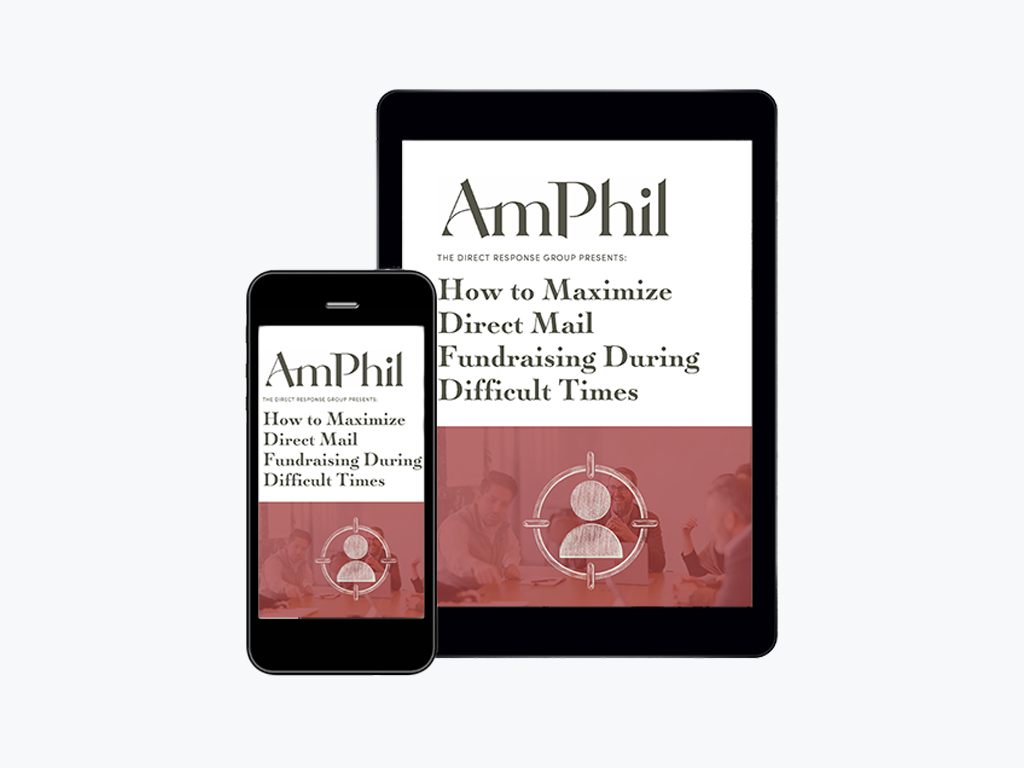
When you start working in the nonprofit fundraising world, learning the terminology of the many fundraising methods available (and what they’re suitable for) is half the battle. One of the best fundraising tools is called “direct response.” But what does direct response mean, and why is it important? Read on for all of that information and more.
What Is Direct Response Fundraising?
Simply put, direct response fundraising raises awareness of an organization’s mission, services, offerings, or solutions to a problem. It is an overarching concept for fundraising via website, email, social media, and physical mail.
A pillar of direct response marketing is action. The advertisement, whether digital or delivered via mail, must tell a story and elicit the recipient’s immediate response or action.
Direct response fundraising campaigns go beyond traditional marketing methods, which focus primarily on brand awareness, to make a direct “ask” of the audience or consumer. But that doesn’t mean that donor cultivation should be abandoned—the goal should be to start or nurture a relationship with donors or potential donors.
In the context of nonprofit fundraising, direct response should include:
- A visually strong, consistent, and cohesive branding strategy.
- A compelling story backed by data.
- A request for support for your overall mission or a specific campaign.
Direct response fundraising is the process of building your donor database and expanding fundraising through the channels of direct mail, email, and various forms of digital solicitations. Beyond fundraising, direct response cultivates donor relationships, and over time, an organization identifies certain practices that resonate with supporters.
Why Your Nonprofit Should Focus on Direct Response Mailings
Direct mail is one direct response component and the most tried-and-true option compared to digital. Research from the U.S. Postal Service shows that physical mail elicited a more potent and longer-lasting emotional response from recipients than digital ads, resulting in the recipients having a better memory of the information the ads were trying to communicate.
Print materials have a higher up-front cost than digital, but the payoff can be better in the short and long term. Your nonprofit will see higher response rates and a better ROI by focusing on direct mail rather than solely investing in digital advertisement.
The best-case scenario is to craft a compelling direct mail campaign, whether for cultivation or solicitation of donors and to integrate corresponding digital elements into it. Just because direct mail is the star doesn’t mean digital should be entirely neglected.
Keys to Direct Mail Success
Direct mail, like any fundraising method, is not a matter of throwing random ideas at the wall and hoping they stick. Read on to learn which key areas to pay special attention to as you craft your ideal campaign.
Highlight the Problem Your Nonprofit Is Trying to Solve
Sometimes, focusing heavily on a problem (even if it’s a problem your nonprofit seeks to solve) seems too “negative” to nonprofit leaders, who wish their direct mail campaigns would highlight the positive things their organization has accomplished instead. This approach is okay in moderation, but remember, without a problem, there is no need for a solution or donor support.
Your founder(s) did not create the organization’s mission in a vacuum. Ensure that in the wrapper of consistent and appealing branding, you clearly center your communications around the pressing issues that more funding could help ameliorate.
Know Your Donor Mailing Lists
Personalizing your direct mail campaigns to the audience at hand is essential to eliciting an emotional response. In the best cases, personalization will result in the recipient recalling your message and donating.
You can buy targeted mailing lists online or through a direct mail agency to help design and execute the campaign (including list building). In keeping with those targeted mailing lists, remember that potential donors on an acquisition mailing, for instance, should be solicited differently than the list of already active major donors would be.
Include a Call to Action
Don’t leave the direct mail recipient wondering what the point of the package was. Respect their time, maximize the benefit to your organization, and capitalize on the “response” part of “direct response” by including an obvious call to action (CTA) in each package or advertisement.
Depending on your nonprofit’s unique needs, the CTA could be donating, joining a major donor club, signing up for a newsletter, and more.
Tell a Story with Direct Mail Messaging
Lean into drama when it comes to direct mail messaging! Good storytelling lends itself to that emotional response and recall we mentioned earlier.
Likewise, it helps convey a sense of urgency to whatever request the campaign makes with its CTAs without overloading on panic. (No donor wants to hear, “We’ll be out of commission by tomorrow if you don’t donate immediately!)
Direct Mail and Digital Fundraising Integration
Integrating digital methods to drive action and gain attention for your direct mail campaign is wise. Integration through seamless branding is how you can best cover your bases, guaranteeing that you’ll see the results and response rates associated with physical mail with the broader brand awareness you’ll get from digital efforts. Here are some digital direct response methods that you can streamline into your next direct mail campaign:
Social Media
Social media significantly broadens your campaign’s audience. You can coordinate visuals with the style and branding of your mail campaign, creating a sense of flow, and prioritize copy that is snappy, on-brand, and (of course) features the CTA front and center.
Your donor base may include donors or potential donors who overlap with your chosen mailing list, so it’s a good idea to double down on your campaign’s visibility by sending emails with similar copy.
Ensure these emails have nice visuals and tell a story like the direct mail packages. Above all, do not include spammy features like too many exclamation points or a sense of urgency so intense that it comes across as a money grab.
Display Ads
Display ads are like those you launch on social media, but they appear more permanently on your website as a banner or beside the sidebar. Again, they should coordinate seamlessly with your mail drop but should link to a landing page or permanent website page where the interested party can immediately take whatever action the CTA asks them to take.
So, What Is Direct Response Fundraising?
Direct response is an effective fundraising solution for any nonprofit looking to grow their donor file, cultivate current donors, grow fundraising, or build relationships with major donors. Direct mail is the most effective direct response method when combined with digital methods of communicating with donors or potential donors, like social media or email, that should be seamlessly integrated into the branding and messaging of each direct mail campaign.


